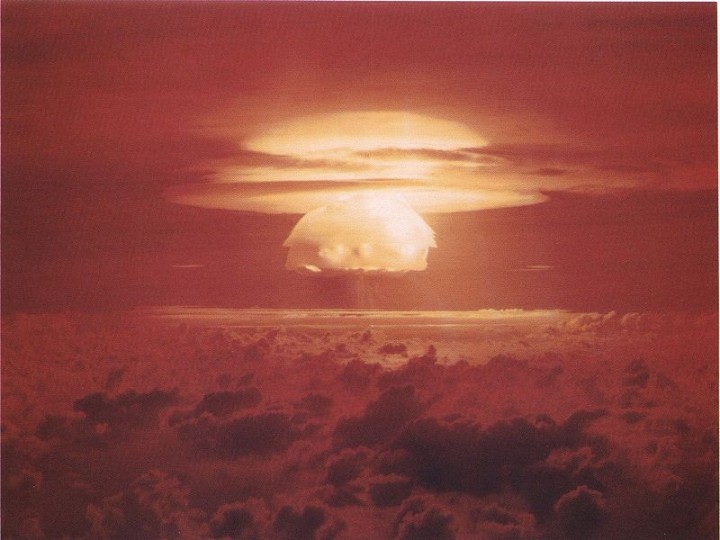Comprehensive Test Ban Treaty should enter into force
Today (29 August) is the International Day Against Nuclear Tests. The date of 29 August was chosen by the United Nations at the suggestion of the Government of Kazakhstan, as it was the day on which the former Soviet nuclear test site at Semipalatinsk was closed.
Over 1100 nuclear tests were carried out by the United States in Nevada, Alaska, the Marshall Islands, other parts of the Pacific, and in outer space.
Tests carried out in Nevada resulted in large-scale contamination of downwind inhabitants and large-scale morbidity.
The largest ever US test was the 15 Megaton Castle Bravo test, which contaminated the crew of the Japanese fishing boat Lucky Dragon, bringing about an agonizing slow death from radiation sickness, and contaminating the Marshall Islands.
The largest nuclear test ever was carried out by the Soviets in the early ’60s in Novaya Zemlya, a large island above the arctic circle, and known as ‘Tsar Bomba’ (King of Bombs). At 60 megatons, it vaporized the sacred hunting grounds of the Nenets people, sent fallout right around the world and caused the planet to ring like a bell with seismic shock for hours. The Soviets carried out around 800 nuclear tests, many of them at the Semipalatinsk test site, causing widespread radioactive contamination with catastrophic effects on local populations.
In addition, nuclear tests have been carried out by the UK, (many of them in Maralinga and Emu Field, Australia), France (Algeria and the Pacific), China (Sinkiang), India (Pokhran, Rajasthan), Pakistan (Baluchistan), and North Korea. French, Chinese, and British tests have all inflicted radiation-based disease and death on local populations and participants.
Nuclear testing is the backbone of nuclear arms-racing and proliferation. A resumption of nuclear testing, or the conducting of a new nuclear test by any country – including North Korea – helps to inch the world toward an abyss into which we hope it will never go.
The best way to halt proliferation and nail down a ‘no nuclear testing’ norm is for the Comprehensive Test Ban Treaty, which outlaws nuclear testing, to come into force.
The main obstacles currently to the entry into force of the CTBT is the refusal of the US Senate to ratify the treaty. If the US were to ratify the CTBT, a small but highly strategic cascade of other ratifications (China, and one or two others) would take place, and the CTBT would enter into force.
Other means might also be sought to cause the CTBT to enter into force.
Banning nuclear testing is both an important environmental protection and an important step toward the elimination of nuclear weapons altogether.










